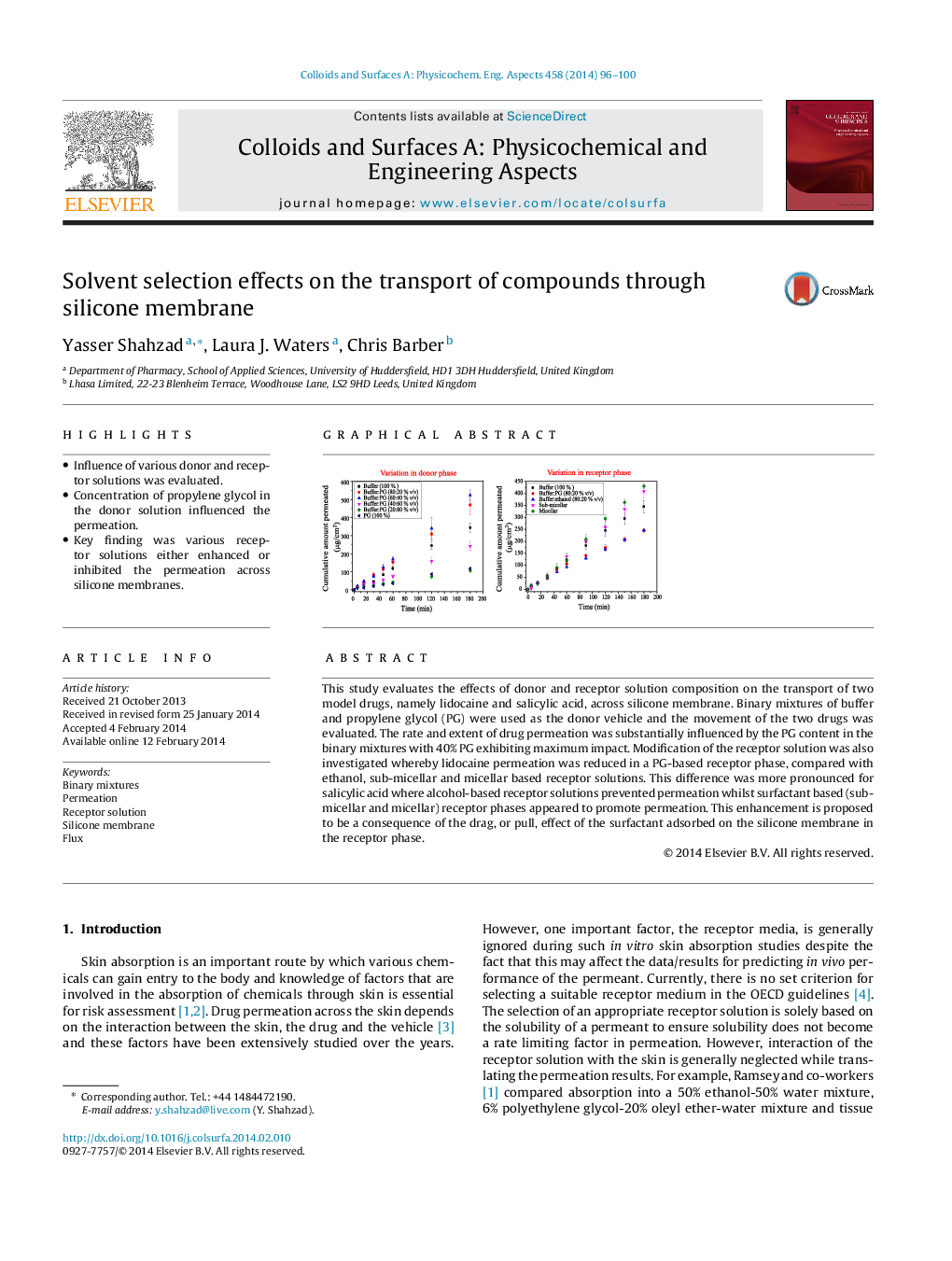| Article ID | Journal | Published Year | Pages | File Type |
|---|---|---|---|---|
| 592738 | Colloids and Surfaces A: Physicochemical and Engineering Aspects | 2014 | 5 Pages |
•Influence of various donor and receptor solutions was evaluated.•Concentration of propylene glycol in the donor solution influenced the permeation.•Key finding was various receptor solutions either enhanced or inhibited the permeation across silicone membranes.
This study evaluates the effects of donor and receptor solution composition on the transport of two model drugs, namely lidocaine and salicylic acid, across silicone membrane. Binary mixtures of buffer and propylene glycol (PG) were used as the donor vehicle and the movement of the two drugs was evaluated. The rate and extent of drug permeation was substantially influenced by the PG content in the binary mixtures with 40% PG exhibiting maximum impact. Modification of the receptor solution was also investigated whereby lidocaine permeation was reduced in a PG-based receptor phase, compared with ethanol, sub-micellar and micellar based receptor solutions. This difference was more pronounced for salicylic acid where alcohol-based receptor solutions prevented permeation whilst surfactant based (sub-micellar and micellar) receptor phases appeared to promote permeation. This enhancement is proposed to be a consequence of the drag, or pull, effect of the surfactant adsorbed on the silicone membrane in the receptor phase.
Graphical abstractFigure optionsDownload full-size imageDownload as PowerPoint slide
